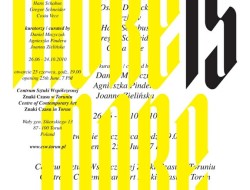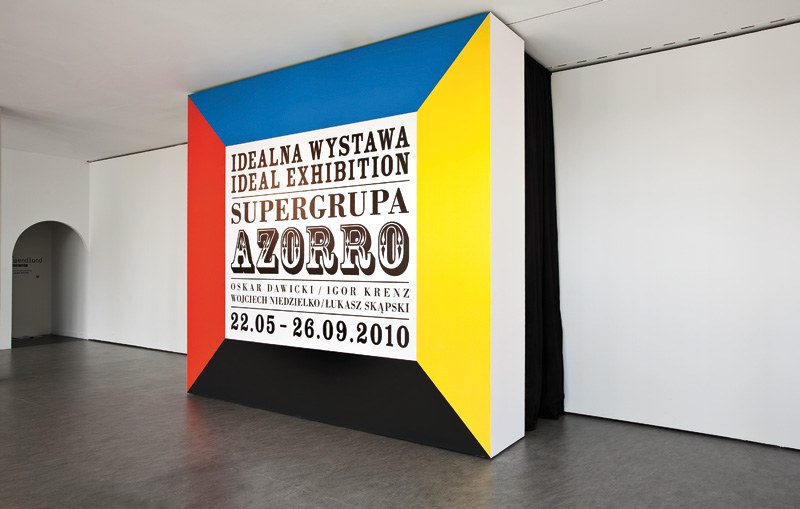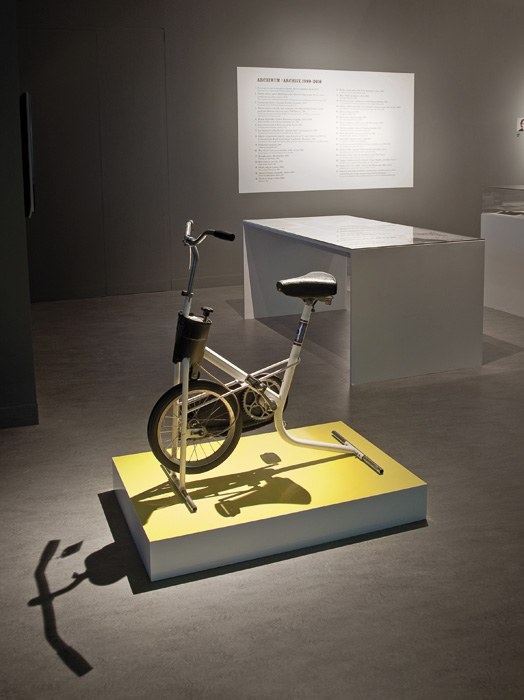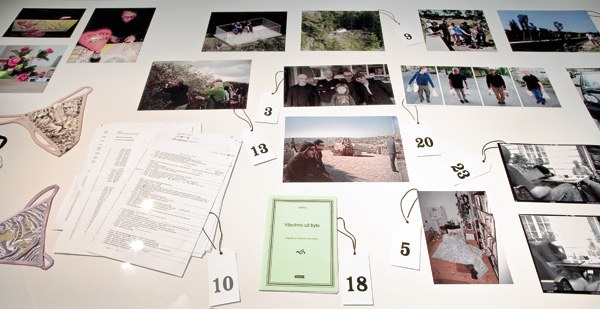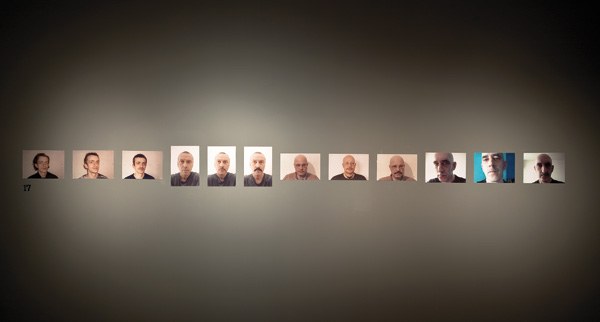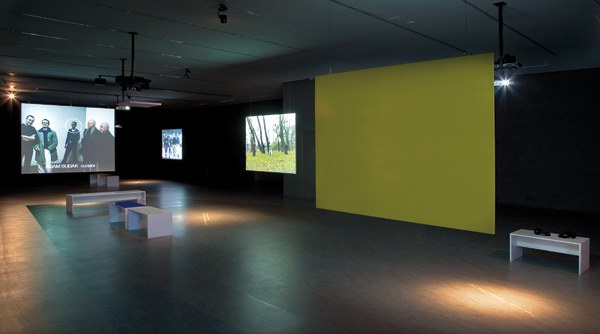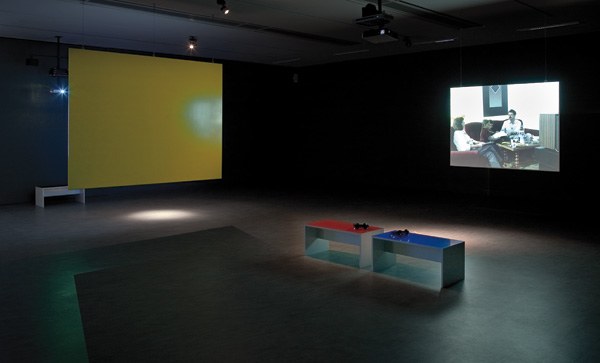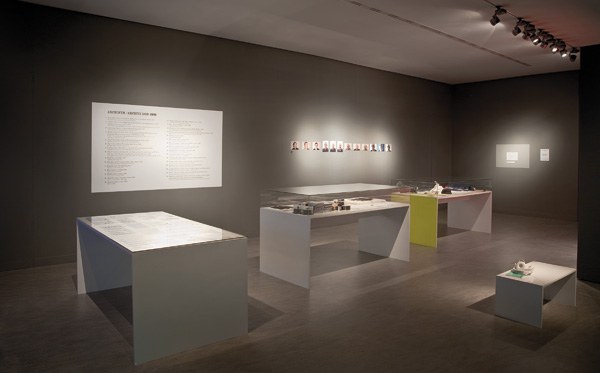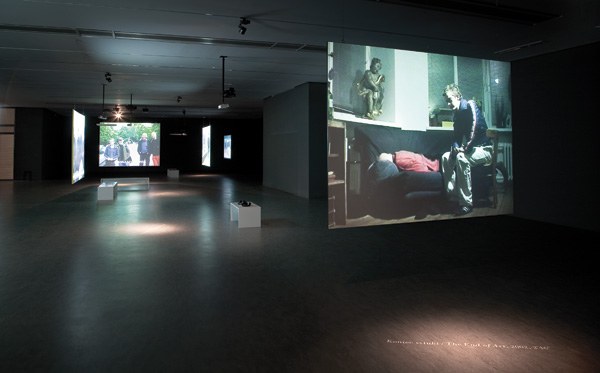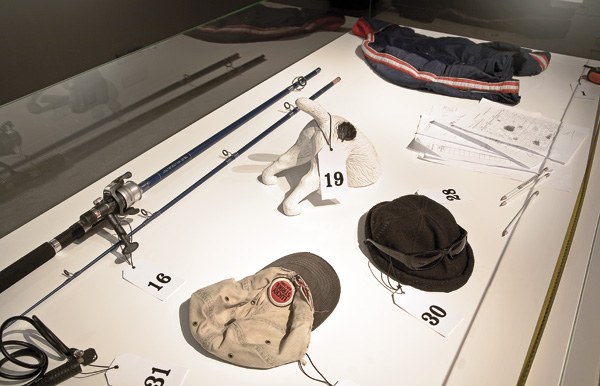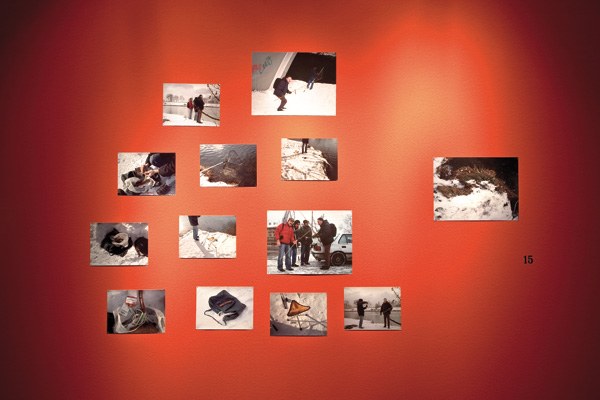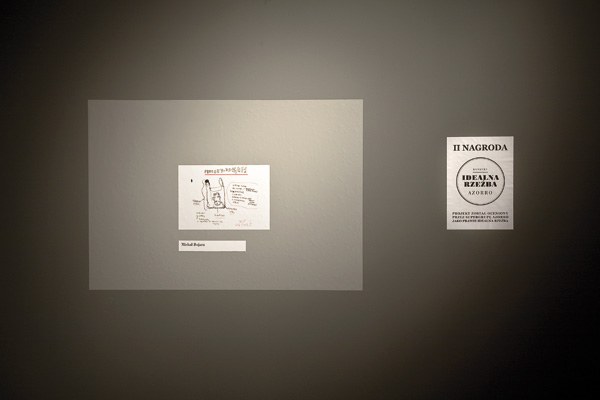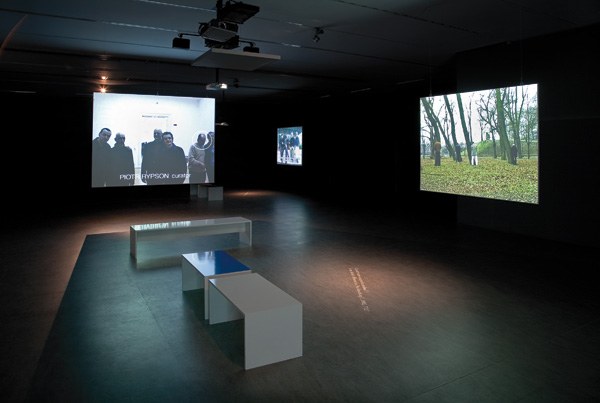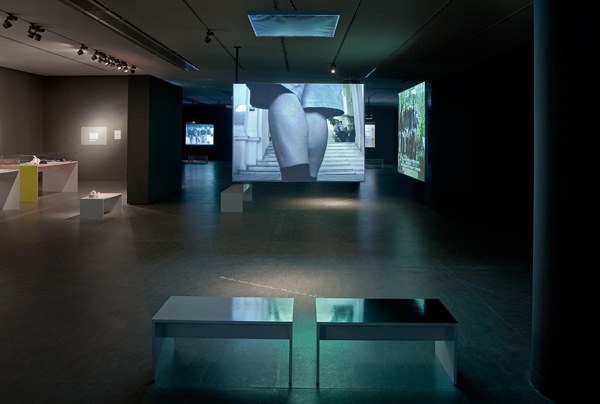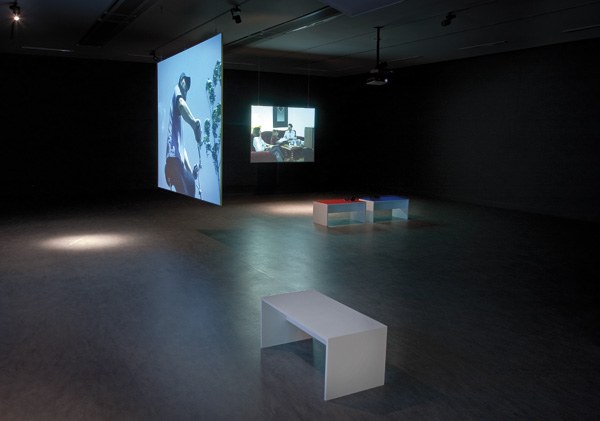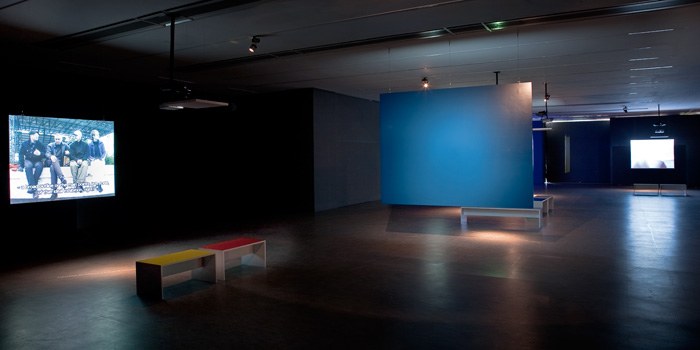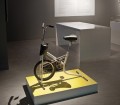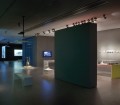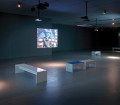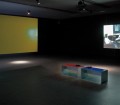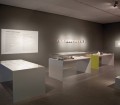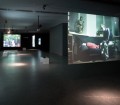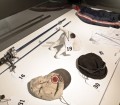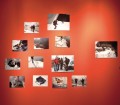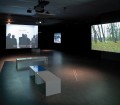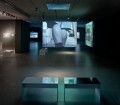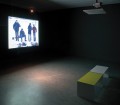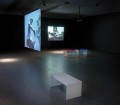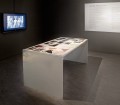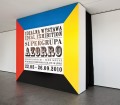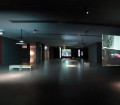Exhibition opening: 21st May, 7 PM
Artists: Oskar Dawicki, Igor Krenz, Wojtek Niedzielko, Łukasz Skąpski
Curated / arranged by Joanna Zielińska
Ideal Exhibition is the most comprehensive presentation of Supergrupa Azorro’s output to date. The title as well as the formula of the show implies, however, ironic approach to the very idea of retrospective. The prestige and significance of the exhibition are stressed by the arrangement relating to the history of the avant-garde, inspired by the Neoplastic Room designed by the famous avant-garde artist Władysław Strzemiński for the Muzeum Sztuki Nowoczesnej in Łódź. The exhibition includes a selection of video works as well as an archive including objects, drawings and various documentation which form an integral part of the artists’ work. The choice of exhibited materials signalizes a fresh approach to the activities of the group whose work has already entered the official canon and achieved recognition in Poland and abroad. By placing special emphasis on particular themes in their work, the exhibition offers space for reinterpretation of Azorro’s output. Some of the exhibited works are new, such as, for instance, Ideal Exhibition, Ideal Sculpture or The Last Film. The exhibition demonstrates that the end of Supergrupa Azorro that has been talked about for some time, is mere rumour.
The image of the world in Azorro’s films is distorted and immersed in absurd. The artists humorously pose questions whether artists are allowed to do anything they feel like doing, whether art is over, or whether everything has been done before? Crucial for the concept of Ideal Exhibition is the creation of an archive that sheds light on their artistic work and methods, being at the same time a collection of seemingly useless artifacts and curiosities which have not been shown to the public before. The archive is an ironic comment typical of Azorro – mocking topical themes, the artists once again question the sense of artistic production and the condition of the artist in contemporary world dominated by art market.
Formed in 2001, the artistic group known as Supergrupa Azorro has been chiefly active in the realm of video art. Crackling with wit, the group’s works counterbalance existential seriousness of critical art of the previous decade without being meaningless. The use of irony typical for those pieces tends to be described as ‛light criticism’. The focus of Azorro’s works is on the art world, as seen in galleries and exhibitions, among curators or patrons. Art itself is the subject matter of their activities. Magdalena Ujma wrote: ‛The members of Azorro have succeeded in being artists without creating art’. Their films discuss the role of artists in society, the expectations, myths and stereotypes that they need to face as well as the very concept of the work of art and its reception. The group’s activities are marked by irony, humour and, last but not least, grotesque – visible in the absurdity of presented reality and overstatement of problems. One of the main themes in their works is the avant-garde paradigm of originality and novelty in art.
The exhibition has been organized in collaboration with several Polish as well as foreign partners. The project is the first attempt to present a comprehensive picture of Azorro’s output and will include a monographic catalogue documenting the group’s work.
Supergrupa Azorro’s Sitting Circus
text by Jakub Żulczyk
I don’t know how to analyze art and, frankly speaking, I never felt like doing that. It is not that I am making the statement ‛I am not an expert’ to play it safe. I don’t think that genuine contact with art is reserved for those who have a critical mind formed by many years of studies and reading appropriate lectures. Sure, it pays to know the context but when it comes to so-called contemporary art I am a casual amateur. My reception of art is similar to that of literature or film – there are things I simply like and the layman term ‛to like’ implies strictly nonintellectual reception – a sense of bond with a given work resulting from understanding, fascination with its aesthetics, and lastly as well as rarely as, for instance, in the case of my possibly favourite artists Chapman Brothers, a sort of fear or peculiar shivering that is hard to define.
Apart from all that, art makes me laugh at times. I believe that this is a good thing. It is a difficult task to make someone laugh and nobody said that art shouldn’t be simply amusing, make use of the sense of humour which, whatever you think of it, is one of the key symptoms of human acuity.
Works by Supergrupa Azorro, whether you call them art or not, amuse me. Sometimes they even amuse me very much. That means a lot.
I have no idea if there is any point in making serious, critical analyses of Supergrupa Azorro’s output which is now most probably complete. Is there at all a way to analyze situational jokes, which rely on nothing else but intuition? Polish critics count Supergrupa Azorro among the representatives of questioning art, conditioned by their Eastern European origin, showing the impossibility to communicate. This might be what their videos are about, but they do it for a lark, they keep distance and have fun like schoolboys. Dawicki, Krenz, Niedzielski and Skąpski did not bother to give any aesthetic value to their works. In their simple films made with a digital camera, they gently prick the swollen balloon and tickle the feet of a sleeping fat man. If Polish art of the first decade of the 21st century may be compared to a party with a lot of of wine and feverish, intellectual discussions, Supergrupa Azorro would be a group of buddies keeping aside, stealing away appetizers, secretly laughing at the others and telling pointless jokes. Absolutely no pompous or snobbish, but rather enjoying their own company. I don’t know about you, but this is exactly what I like. Whenever I go to a party, I instinctively look for such a group of people to hide in their company.
In my favourite Azorro’s video End of Art, three members of the group try to wake Łukasz Skąpski, who has happened to drop off on a sofa. Each of them has shocking news to bring home to him: ‛the art has ended, Łukasz, get up, everything is over, painting, video, everything is finished.’ Łukasz’s only reaction to these revelations is loud snoring. Another piece closely connected to End of Art is the video Everything has been done – seated on a wooden bench, the members of the group try to come up with an idea that no artist has come up before for twenty-five minutes. Everything has been done and everything is over – these two phrases has been used in reference to culture in the broad sense of the word dozens of times, in the form of more or less pompous manifestos or ramblings of resigned theoreticians of culture. By reducing these bombastic slogans to gags that look as though they came from the cult film The Cruise, Azorro uncover overblown aspirations not so much of artistic activity per se but rather of its critics striving to push any artistic activity into strictly defined frames. Anyway, no matter what your approach to these two videos is, you will find that no one is left out: neither artists whose ambitions are impossible to be fulfilled, nor critics who tend to dismiss simple, naive and intuitive reception of art, and whose political and philosophical aspirations make works of art as readable as occult treatises. This may, of course, be just my interpretation and, perhaps, Azorro had no intention of insulting any one. Perhaps, they only wanted to make a couple of amusing videos. Unlike some critics, I wouldn’t mind at all.
The fact that the members of Azorro took the roles of pranksters and jokers doesn’t argue against them; it doesn’t make their works less valuable. To me, at least. To me, self-irony is a truly great virtue and I am fully convinced that Azorro have a lot of it. Well, that was exactly what they needed to parody so cleverly and brilliantly the chief features, fears and shameful secrets of the Polish Contemporary Art, being Recognized Polish Artists themselves. In the video Family, Azorro visualize the wet dream of most Polish artists and curators: a typical Polish family watching Libera’s video on TV and discussing Polish art, while children try to reconstruct Malevich’s Black Square or Kozyra’s Pyramid of Animals for fun. Even more funnily, many artists in Poland seem to take this dream as reality, supporting the notion that Polish contemporary art is a most significant part of social life. In Family, Azorro surely ridicule their own fantasies, too, futile in a country where the only contact with art for most citizens is to pass the palm at de Gaulle’s roundabout. The same citizens, on being asked to name a Polish artist, would only recall ‛that woman with the crucified dick’. The fantastic ability to laugh at themselves is also obvious in Portrait with a Curator, a brilliant satire on the hermetic circle of Polish artists where you have to know who to socialize with and where to hang around to climb the ladder of success step after step.
The most important thing, however, is that Supergrupa Azorro’s works show no sign of contempt or immature rebellion. Their humour is perfectly grown-up and universal despite its very specific origin; its purpose is not to revolt against anything. The ‛light criticism’, as someone described their activities, has the power to reveal emptiness behind pompous slogans, expose senselessness and futility of meaningless discussions. Just like in the video Is an Artist Allowed to Do Anything?, where the members of Azorro decide to take this question, asked a million of times in countless discussions and in numberless critical articles, literally in a most fantastically stupid way, running a red light and pissing in public places.
I am not the right person to decide whether Supergrupa Azorro made art or not, or whether they ‛made it without making art’. One thing I know for sure: their works never pretended to be important, groundbreaking or subversive. It there was any ethos in their work, it was the ethos of stepping aside and this way of conduct is what I value with no reservations. Their films contained elements of cabaret, performance art, apparent pointlessness of flashmob and collective jokes – see their performance as extras in the film about the Pope. Anyway, their penultimate, as far as I know, work made it clear that the members of the group could enter the next stage of their cheerful lark, go for virality, and direct projects that would go beyond the hermetic world of Polish art concerning a more serious play, i.e. breaking and diversifying cultural codes. The four ‛superheroes’, however, decided to make their Last film and call it a day. Considering what I have written above, it is a shame on the one hand, but on the other perhaps it is not. It is important to know when to stop to tell a joke; when you ridicule people at a party, you should do it with style and leave the party at the right time.
That only makes them even more charming. And I guess this is it.
Especially as I am sure that when I was writing these words Łukasz Skąpski was still snoring.
 The Institution is funded from the budget of Toruń Municipality
The Institution is funded from the budget of Toruń Municipality

